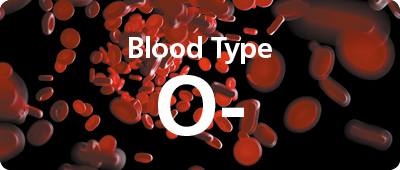
Utilization of Universal Group O Blood By Non Group O Recipients
Rebecca Barty, MLT, BA, MSc(c),
Yang Liu, MMath,
Menaka Pai, MSc, MD FRCP(C),
Anushka Jaffer, BSc,
John W Eikelboom, MBBS, MSc, FRACP, FRCPA,
Richard J Cook, PhD,
Nancy Heddle, MSc
Blood (2014) 124 (21): 5103.
https://doi.org/10.1182/blood.V124.21.5103.5103
Abstract
INTRODUCTION: Individuals with group O blood are designated ‘universal donors’ as their red cells can be transfused to all individuals. 15% of donors are Rh negative; their red cells are particularly valuable as they are the only blood compatible with O Rh negative recipients. Canada has experienced group O blood shortages in the past, which have been aggravated by group O red cells being given to non-O recipients. We performed a study to determine the utilization patterns of group O red cells (both Rh positive and Rh negative) by non-O recipients in a large Canadian city.
METHODS: Blood utilization data from all group O Rh positive and Rh negative red cells transfused at three academic hospitals between April 2002 and March 2013 were used for this study. Autologous and directed donor red cells were not included. Information was collected for all patients receiving group O blood including: age; inpatient or outpatient setting; ABO and Rh type; number of transfusions received; presence of red cell alloantibodies; most responsible diagnosis (MRD); and indications for transfusion. Descriptive statistics were performed using SAS 9.2.
RESULTS: During the study period, 289,392 units of red cells were transfused, of which 139,320 were group O units. A minority of O red cells (8.7%) were transfused to non-O (A,B or AB) recipients. Of the 106,827 transfused O Rh positive red cells, 4.3% (4,594) were given to non-O individuals. Of the 32,493 transfused O Rh negative red cells, 23.2% (7,544) were given to non-O recipients. When O Rh negative red cells were considered, 32.8% (10,670) were given to Rh positive recipients. For outpatient O red cell transfusions (31,730 units), 19.6% of O Rh negative units and 5.9% of O Rh positive units were transfused to non-O recipients. For inpatient O red cell transfusions (107,590 units), 24.2% of O Rh negative units and 3.8% of O Rh positive units were transfused to non-O recipients. The most common MRD for non-O patients receiving O blood were circulatory disease, cancer, and trauma. The most common indications for transfusion of O negative blood to non-O recipients were: presence of an alloantibody requiring phenotype specific blood (26.0%); trauma requiring uncrossmatched blood (8.5%); outdating unit (12.5%); recipient was in neonatal ICU (11.5 %); and recipient was a transplant patient (6.4%). In 39.5% of cases, there was no clear indication for transfusion of O negative blood to a non-O recipient.
CONCLUSIONS: Most O Rh positive blood is given to O Rh positive recipients. However, O Rh negative blood is frequently given to non-O recipients; this can contribute to shortages. A number of factors leading to transfusion of non-group identical blood - presence of an alloantibody, the need for massive/urgent transfusion (e.g., trauma), and outdating units - could be better managed by Transfusion Medicine Services to preserve the scarce resource of 'universal donor' blood.
Disclosures
No relevant conflicts of interest to declare.
https://ashpublications.org/blood/article/124/21/5103/92368/Utilization-of-Universal-Group-O-Blood-By-Non?searchresult=1
Thanks to: https://ashpublications.org






 Sat Mar 23, 2024 11:33 pm by globalturbo
Sat Mar 23, 2024 11:33 pm by globalturbo

